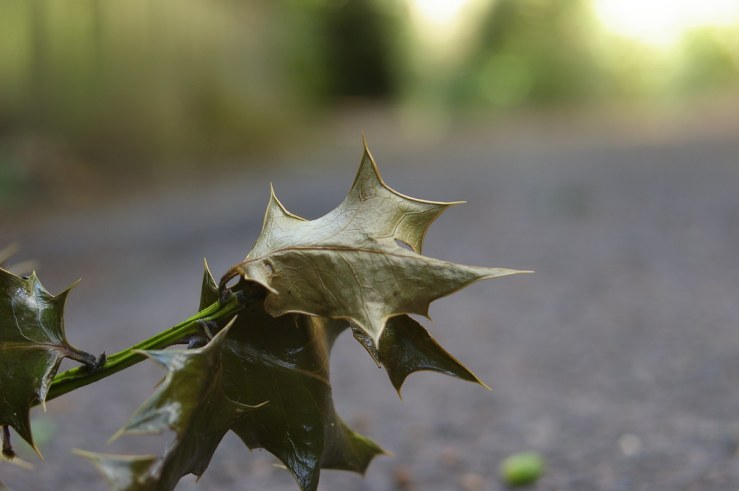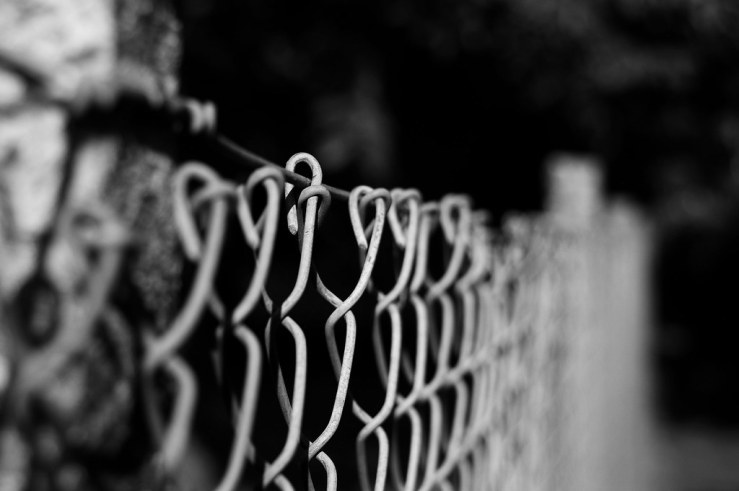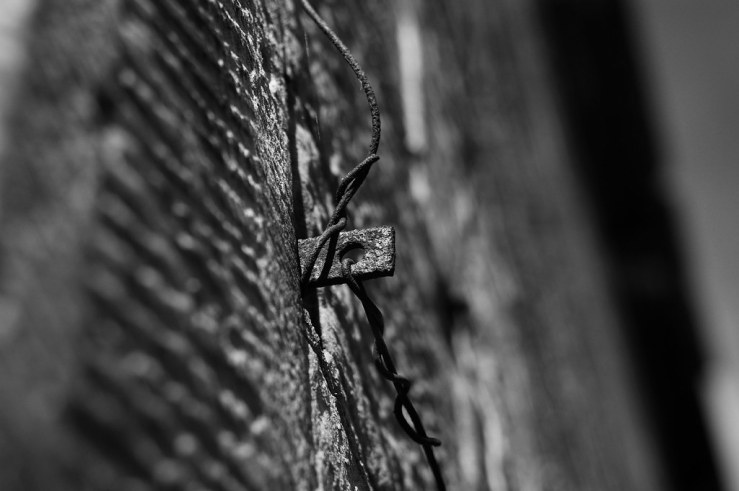With interchangeable lens cameras, the majority of the time I use a prime lens.
My reasons are myriad –
The simplicity of one focal length.
The generally better and more consistent image quality, and knowing it can be relied upon.
The more often than not faster maximum aperture, giving more options for low light and depth of field.
Their lighter weight and more compact size.
But now and again I’ll find a zoom lens that does something a prime can’t, and which makes it well worth using.

The latest in this very select company is the rather uninspiring sounding SMC Pentax-F 35-70mm f/3.5-4.5.
Its looks don’t exactly send pulses racing either, a plethora of dark grey plastic with green, white and red lettering, which presumably looked all the rage from 1987-1991 when they were made.
But then the reasons it’s caught – and more than held – my attention started to appear.

Being Pentax-F series, it’s compatible with all PASM modes on my Pentax DSLRs, controllable in camera, so no need to adjust aperture on the lens with the rather plasticky aperture ring (or fiddle about with manually stopping down).
It covers 35-70mm (a useful 52.5 – 105mm equivalent field of view in 35mm terms on my Pentax DLSRs).
It’s pretty compact – only slightly larger than most primes, and light enough too, especially compared with something like the monster Pentax-A 35-105mm I used to have, which weighed almost three times as much and felt about threes time as long too.

The minimum focus throughout is disappointing at 0.7m. But it then has a further range when you shift the focal length beyond 70mm into the “macro” range.
Here you can get closer than most primes – within about 0.2m from the front of the lens to the subject – a major plus for me.
And 0.2m at an equivalent field of view of 105mm is pretty intimate.
In fact it’s in this “macro” range I’ve been using the 35-70 almost exclusively.
It still auto focuses, but you can tweak it manually with the focus ring at the end of the lens, without upsetting the AF. Ideal for fine tuning at close distances.
So whilst on paper you might consider a 35-70mm f/3.5-4.5 lens a poor alternative to 35 and 50mm primes (which I would agree it is – I hardly ever use it at these focal lengths), once you commit to just that 70mm focal length, and especially when you make use of that macro range, it starts to become something of a speciality lens, that doesn’t really have a direct prime equivalent – and certainly not in my limited arsenal.
And on my newly acquired K100D, it delivers a very satisfying image indeed.

So sometimes, in fact for me nearly all of the time, the key to getting the most from a zoom lens is to find the way(s) it can provide a unique experience and perspective that perhaps even your favourite primes can’t.
How about you? Which are your favourite zoom lenses, and why?
Please let us know in the comments below (and don’t forget to tick the “Notify me of new comments via email” box to follow the conversation).
Thanks for looking.
What Next?
Share this post with someone you think will enjoy it using the buttons below.
Read a random post from the archives.
See what I’m up to About Now.


I haven’t ruled them out, but I have yet to bond with one in over forty years. Zoom lenses rub me the wrong way for some reason. I’m trying to make friends with my Zuiko 40-150 because it’s the only long lens I have for M43’s. It’s surprisingly sharp considering that they are almost free here, mine arrived in a bundle with something. My Lumix LX-7 has a zoom, but I just leave it set to 50mm so it’s essentially a fixed lens camera at this point. After 3 years I think I’ve finally figured out how to work it, I think. I can see that the zoom could be just the ticket for certain situations. It’s s handy little thing, but not exactly inspiring.
Yeh I’m not sure any zoom lens would excite someone like a lovely 58/1.4 Rokkor or 50/1.4 Takumar… But I think if you can just use them as one “prime” lens at a time, then some have plenty to offer.
Dan, that’s exactly what I do with the LX-7, the step zoom feature is a lifesaver for me. It’s usually at “50”, but I have used “35”, and “90” a few times.
Ah I love the step zoom feature with cameras, I’ve had a few Ricohs with it, plus the ability to set one in the memory/custom slot, so you can just pick it up, switch it on and shoot it like a 24/35/50 etc prime…
I, on the other hand, hardly ever use a fixed focal length lens.
It’d be a dull world indeed if we were all alike. 🙂
Marc, how come the lack of prime lens use?
It doesn’t fit with my shooting – because I often need to change focal lengths in an instant. I’m usually in rough terrain or have some other limitations which would make moving physically closer or further away difficult. I can zoom in on a distant bird very quickly with a twist of the wrist!
Yes I know plenty of people (probably the vast majority!) use a zoom like this. I just don’t like the lack of control and consistency – heaven forbid I shoot a photograph at a crazy random focal length of 39 or 57 or 64mm, I need to know it’s at something familiar like 35, 50 or 70mm! : )
That’s a terrible trap to fall in. Like people thinking images have to be fixed dimensions/aspect ratios because that’s the way film and prints have always been. :p
Ha ha, yeh I’m in that crowd too. I don’t how I’d cope having a photograph shot at 63mm then cropped to an aspect ratio of 7:6…
I agree with you on this lens. It has to be, in my opinion one of the best zooms Pentax has ever produced. I’ve shot this lens on my K-30 and my K-5 and the colors and sharpness just pop. The 50-105mm range on APS-C is definitely an odd range, but it works well as a walking around lens. Oddly, I have yet to shoot this lens on my Pentax film bodies.
Best of all, I picked this lens up at a thrift store for $18.
Rob, glad you’ve discovered its charms too! It does have very good reviews on Pentax Forums, I was just a bit sceptical based on its looks and build. But it really does perform well, and as I said in the post, that macro range is very useful for my needs. I had the A 35-105mm which delivered some stunning photos, but the extra weight and size meant I virtually stopped using it. The 35-70mm is plenty small and light enough to carry around on camera, or even as a second lens in a bag.
Hey Dan… why not just splash out on a dedicated MACRO lens? #justasking
I have toyed with the idea of a zoom lens on numerous occasions. But, never really liked the weight and size of the dammed things. 35mm film cameras (at least Nikon) don’t weight a ton. And anything like a zoom just pulls down the front when slung around one’s neck. It just messes up the ergonomics and (IMO) general ‘feel’ of use.
And then there’s the ‘look’ of images shot at the long end. Never been a fan of the compression that long lenses create. Also I feel disconnected from the scene using a long lens. Hence my favour for short lenses. l like being in close and get a buzz off that.
Now I do understand using a zoom as, say a general travel lens. And am thinking about something to couple to my ‘new’ D300s for my hols this summer (2 weeks travelling the northern Adriatic). There are some amazing lenses to choose from. Yes, it could be nice to get a shot from across the piazza or across the bay. But then most (affordable) zooms are not that fast (and not that necessary). So, I am going to need a lot of light (nothing in low-light or indoors). And maybe a tripod or use a wall to stabilise at the long end. And then any cost-effective zoom will probably start above 50mm… I am going to have no wide capability. So I will need a wide lens… etc. etc
I therefore do not really have that much use of the long end of a zoom. And the short end will not be wide enough. So I have a 24mm (36mm on DX), 35mm (52mm on DX) and a 50mm (75mm on DX) and I utilise them at the native focal length on my 35mm film camera as well. Good enough for street shooting in those tight dark corners of a street market. So, no, I’m not going to go the zoom route.
But back to you… Why not a dedicated MACRO lens? You will probably get more use out of a 100 or above. Or better yet, a 200mm. Then you don’t have to get in so close… blocking out your available light. And macro lenses are designed for little to no distortion across the range. You will be shooting fairly stopped down making no real-world difference in aperture comparisons.
Okay, enough from me. Back into my cave until the next time I emerge 🙂
Have a good one mate
Anton, whenever you next venture out of your cave, your thoughts are always welcome in mine!
I do have a few macro options on my wish list actually. The Takumar or Pentax-M 50/4 or 100/4, and the Pentax-A 50/2.8. The latter is the more appealing as it’s easier to use on my DSLRs (auto aperture), and it’s a stop faster, so more light in the VF, and easier to focus. I’ve had an M 50/4 previously and it was an excellent lens, right from wide open. I think I only sold it as I was having a major purge of 50/55mm lenses and preferred to keep a Takumar 55/1.8. And the maximum of f/4 sometimes made manual focus a challenge.
I hadn’t thought about that with the light being blocked, interesting. A 100mm lens would give 150mm field of view with my APS-C DSLRs, which is getting pretty narrow, but if you’re shooting close that extra reach is welcome anyway. Or I could just get a Takumar 105mm and use a short extension ring. I’ll keep thinking.
I didn’t get the 35-70mm zoom specifically as a macro option, it just happens to be the feature I’ve used most, and it does focus closer than my other DSLR lenses, which makes it unique in my arsenal. I don’t really need anything 1:1 to shoot fly’s eyeballs or anything, I just like getting a bit closer than the usual 0.5m or so that a typical 35 or 50mm lens allows. Having cameras like the Ricoh GRD III and Lumix LX3 that focus down to 0.01m away has spoilt me!
The zoom featured in this post is small and light enough to not mess up the ergonomics or weight on a DSLR. It’s not like a pancake or super light AF prime of course, but svelte enough to not be an issue in use. My DSLRs (K30 and K100D) are about as small and light as they come so that helps.
I wonder why you feel “disconnected from a scene” with a long lens, when in theory they get you closer into the scene than something wider? Is it because you need to be further away physically with say a 100mm lens compared with a 35mm or 28mm?
24, 35, 50 is surely the near perfect set of lenses, for 35mm and APS-C. I don’t have a 24mm, but know I could live quite happily with just the 35 and 50mm options I have.
just saw this today… not sure why I thought of you 🙂
https://mymodernmet.com/diy-macro-photography-extension-tube/
Thanks Anton, very interesting! It is amazing what those 3D printers can do too, that was the stuff of science fiction only a decade ago. I don’t need to go quite that extreme with my close ups though!
Did you see the article about the guy who made a caravan into a camera? The pictures look fantastic.
https://mymodernmet.com/giant-camera-diy-photobooth-brendan-barry/
Turns out he makes cameras out of all kinds of things –
https://brendanbarry.co.uk/
I’ve been eyeing buying the Pentax-A version of this lens. I have a 35-70 Ai Nikkor for my Nikon bodies and, except for some barrel distortion at the 35mm end, it’s a great everyday lens. You gave me the idea of using a zoom as a bag of primes and that’s what I do with it: 35, 50, and 70.
Jim as we’ve talked about before, I had the Pentax-A 35-70 f/4 constant aperture version which was very decent. I think there’s a variable aperture f/3.5-4.5 version too, which I believe is the same optics as my F version. I would go for the F as it gives you the AF option and is slightly lighter. You can still focus manually with it too. But yeh absolutely, a bag of primes is the only way I’ve ever used zooms!
I had a Tamron 35-70 f3.5 for my old Minolta SLR which made superb pictures. It’s macro focus range was really close in too, so a very versatile lens. It was a big, solid lump though and made the camera very front heavy.
On my LUMIX LX5, I usually leave it set a 28mm and use it as a prime, but I have on a few occasions made use of the zoom too. The 28mm experiment began life to see what it would be like to shoot with a fixed lens digital (most notably a Ricoh GR) and I’m getting pretty used to it. I like the simplicity and how you get your “eye in” knowing how much of a scene will be in the shot, before you raise the camera. But I’m also really enjoying the LUMIX full stop and don’t thing I’ll be looking to change it for a Ricoh any time soon.
Yes I found I quickly adapted using my GRD III with a 28mm lens. It’s wide-ish but not so wide as to be too specialised for general use.
Like you say, shooting at the same focal length with a camera over a sustained period means you just start to see the compositions before you even raise the camera.